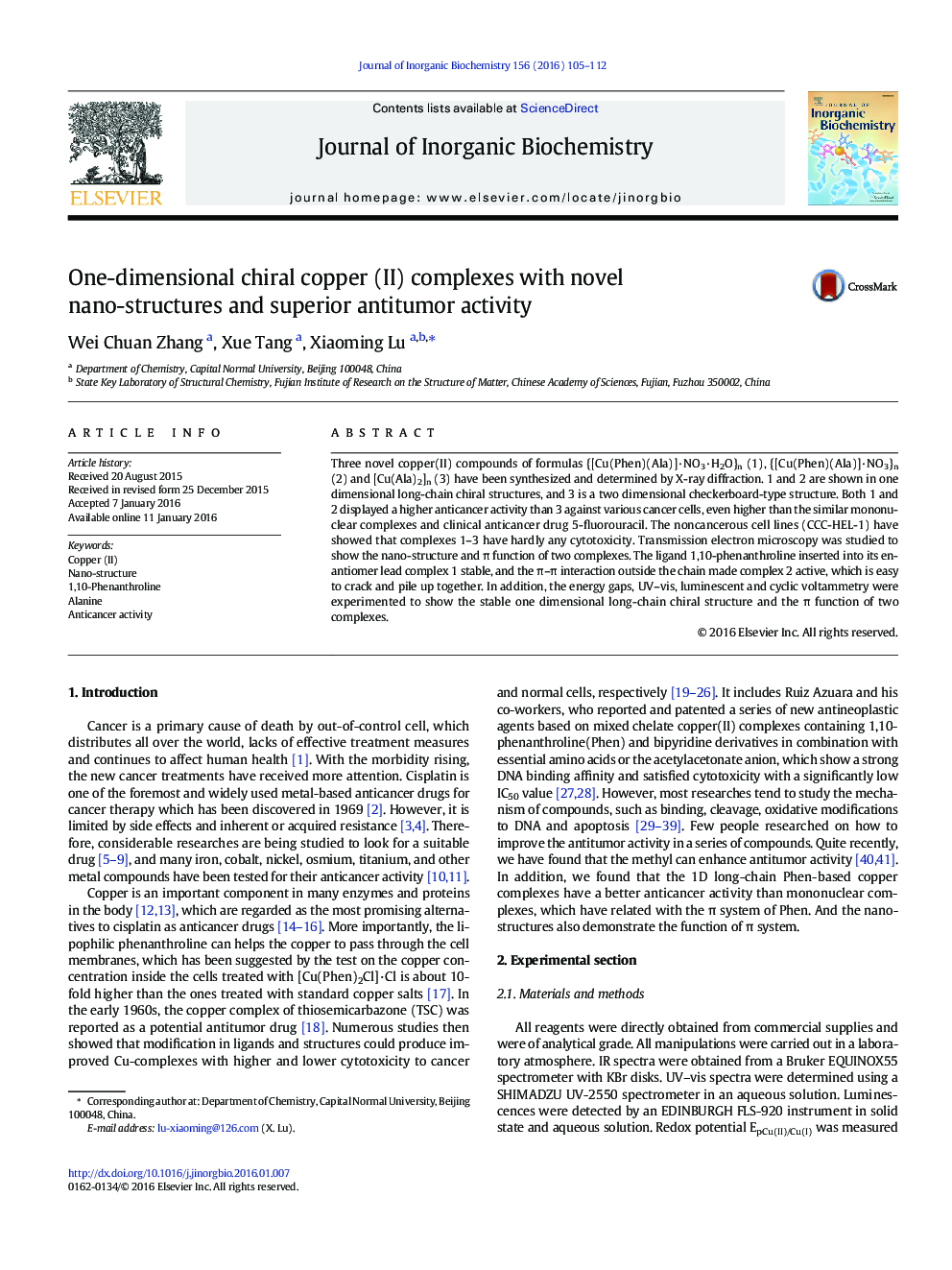| Article ID | Journal | Published Year | Pages | File Type |
|---|---|---|---|---|
| 1316430 | Journal of Inorganic Biochemistry | 2016 | 8 Pages |
•CuII-complexes based on 1, 10-phenanthroline and alanine have been synthesized.•TEM was used to analyze the difference of complex 1 and 2.•Inhibition ratio and cell viability assay have been tested.•Energy gap were calculated from free to coordinated ligands.•UV–vis, fluorescence and CV were conducted to characterize three compounds.
Three novel copper(II) compounds of formulas {[Cu(Phen)(Ala)]·NO3·H2O}n (1), {[Cu(Phen)(Ala)]·NO3}n (2) and [Cu(Ala)2]n (3) have been synthesized and determined by X-ray diffraction. 1 and 2 are shown in one dimensional long-chain chiral structures, and 3 is a two dimensional checkerboard-type structure. Both 1 and 2 displayed a higher anticancer activity than 3 against various cancer cells, even higher than the similar mononuclear complexes and clinical anticancer drug 5-fluorouracil. The noncancerous cell lines (CCC-HEL-1) have showed that complexes 1–3 have hardly any cytotoxicity. Transmission electron microscopy was studied to show the nano-structure and π function of two complexes. The ligand 1,10-phenanthroline inserted into its enantiomer lead complex 1 stable, and the π–π interaction outside the chain made complex 2 active, which is easy to crack and pile up together. In addition, the energy gaps, UV–vis, luminescent and cyclic voltammetry were experimented to show the stable one dimensional long-chain chiral structure and the π function of two complexes.
Graphical abstractFigure optionsDownload full-size imageDownload as PowerPoint slide
